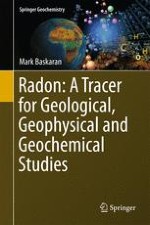2016 | OriginalPaper | Buchkapitel
11. Radon: A Human Health Hazard in the Environment
verfasst von : Mark Baskaran
Erschienen in: Radon: A Tracer for Geological, Geophysical and Geochemical Studies
Aktivieren Sie unsere intelligente Suche, um passende Fachinhalte oder Patente zu finden.
Wählen Sie Textabschnitte aus um mit Künstlicher Intelligenz passenden Patente zu finden. powered by
Markieren Sie Textabschnitte, um KI-gestützt weitere passende Inhalte zu finden. powered by
